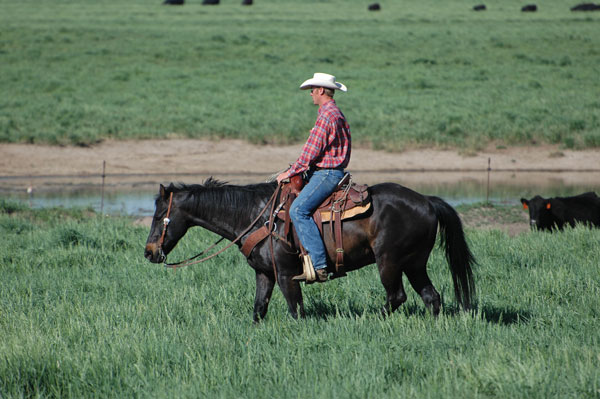Go big, then go small when planning your ranch’s future
April 28, 2016

I love reading management books. It has always fascinated me why some businesses are hugely successful and others are failures in similar markets with similar products. Is that because management from a small business perspective has and always will be a much bigger challenge? A business with limited employees simply doesn’t have the specialization and focus of larger businesses.
A ranch owner may be the CEO and be responsible for direction, vision, big strategic decisions and building the right culture to succeed, but he is probably also the CFO, human resource manager, truck driver, veterinarian, geneticist, marketing expert and a whole host of other job titles. While many ranchers have put in the effort to write job descriptions for themselves and their team, in the end it boils down to doing everything that needs to be done.
I have had jobs with mid-size businesses, where I had a defined job description, clear metrics to measure your success, management dedicated to helping me succeed, established budgets and well qualified support people. However, that is not the environment that I find myself now operating in.
I still learn a great deal from reading these management books, even if most of what they talk about doesn’t directly apply to a family ranching operation. One of the concepts that does apply amazingly well, however, is worded in a lot of different ways. In essence, it is to set big goals (go big). Set goals that are beyond your current reach, that go beyond stretching your operation, that require entirely new skills, models, etc.
Once that is done, then you have to transition from going big to going small. It is called focus—look for the one thing that will help you move toward that goal and focus on that. The more narrowly you can define your focus, the more quickly you move toward your goal.
Because the day-to-day management has to get done, that one priority per day is probably all a small business can muster. Success is the only option for most small businesses, yet success in a small business tends to be sequential; small businesses just don’t have the structural advantages of larger businesses, so success tends to happen at a much slower pace.

BEEF Seedstock 100 List
Looking for a new seedstock provider? Use our UPDATED Seedstock 100 listing to find the largest bull sellers in the U.S. Browse the list here.
Whether it’s a large enterprise or a small enterprise, we all still have the same challenges—align purpose and vision with priorities and execution to create results. For small business managers, however, it’s simply a more difficult challenge. What we need to do, what we can do and what we should do creates a to-do list that can never be fully marked off. But one focused task to help reach the bigger task every single day, that is something that can be scratched off.
All these management books have a way of making small business managers feel inadequate, but we have one major advantage—big businesses spend a lot of time trying to build passion and ensure that the team is bought into the vision – that is almost a given. Our teams are smaller, but they tend to be made up of family who are passionate about businesses success and the long-term, which is exactly why small businesses are the ones that change the world.
You might also like:
How to control sucking & biting lice on cattle
When is the best time to wean? It might be younger than you think
Late-gestation trace mineral supplementation shows promise
7 tips for limiting the spread of invasive species in your pastures
About the Author(s)
You May Also Like


.png?width=300&auto=webp&quality=80&disable=upscale)
